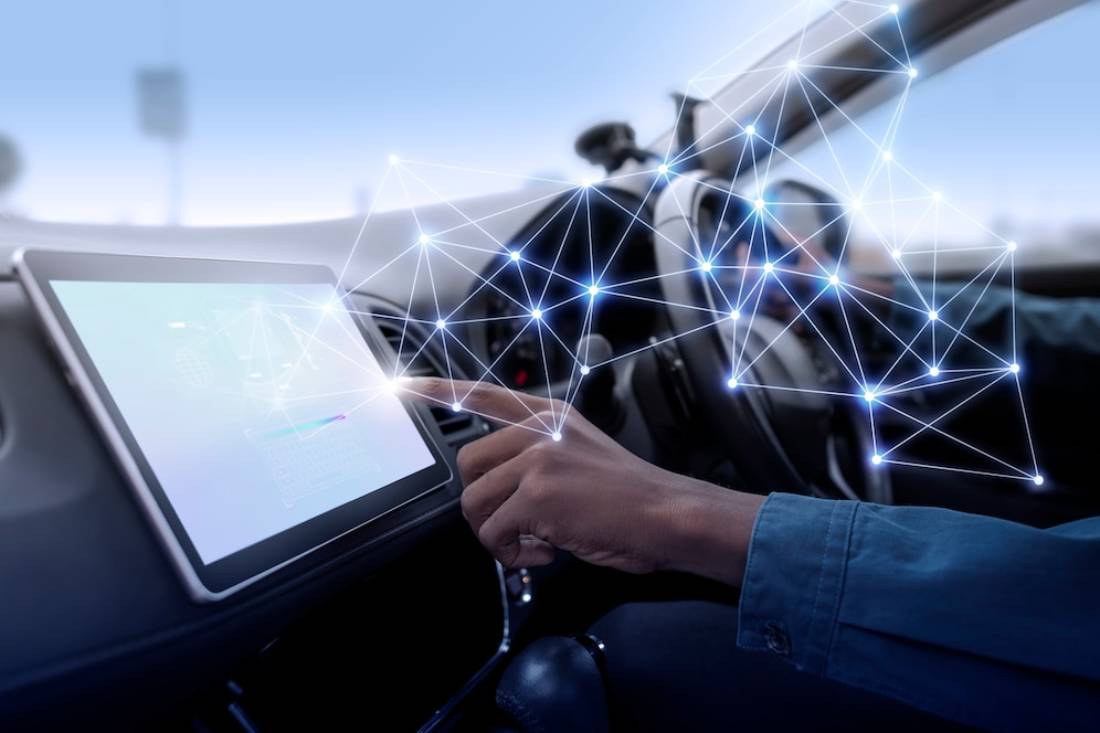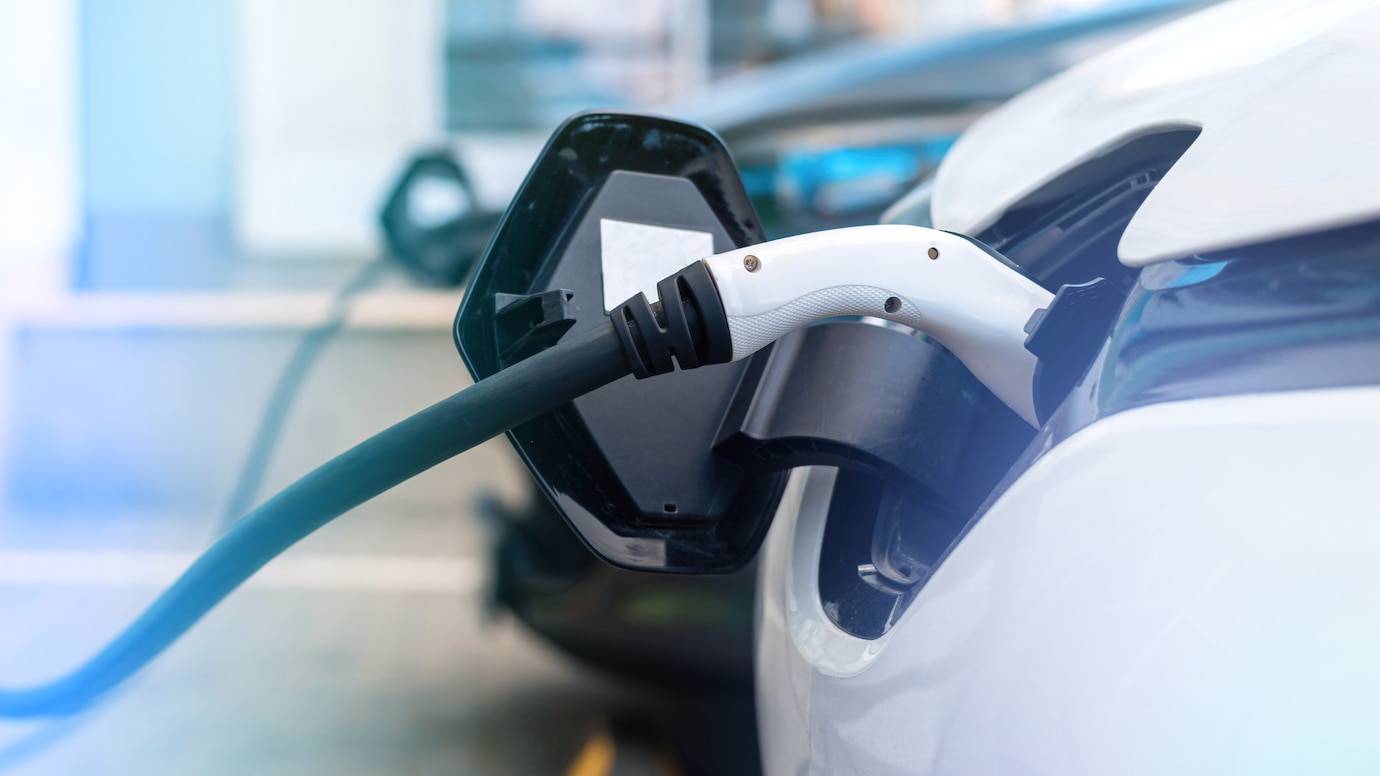
The Role of AI in the Future of Electric Vehicles
AI is boosting the electric vehicle (EV) industry. It makes driving smarter, sleeker, and safer. This tech revolution is changing how we connect with vehicles. From self-driving wonders to smart battery management, the shift is impressive.
As the automotive world shifts gears towards electrification, AI stands at the helm. It enhances EV performance, boosts reliability, and elevates user experience. AI-powered EVs will dominate the roads by 2030 and beyond. This is thanks to innovations in machine learning, big data, robotics, and automation.
This article delves into how AI is steering the future of EVs. Key focus areas include autonomous driving, energy efficiency, predictive maintenance, manufacturing, and user delight. We’ll also navigate challenges, ethical questions, and the promising horizon for AI-driven EVs.
AI and Self-Driving Electric Cars

The Rise of Autonomous EVs
The race for autonomous driving is heating up! Automotive and tech titans like Tesla, Waymo, NVIDIA, and Apple are in the fast lane. Their mission? To develop fully self-driving vehicles that redefine our journeys.
AI-driven technology is making leaps and bounds every day. By 2030, we anticipate Level 4 and Level 5 autonomous vehicles to be part of our daily lives. Buckle up because the future of driving is here!
Self-driving EVs rely on multiple AI technologies, including:
- Deep learning algorithms to process real-time road data.
- Computer vision to detect pedestrians, objects, and road signs.
- LiDAR and radar sensors for accurate mapping and navigation.
- Neural networks continuously learn from vast amounts of driving data.
Benefits of AI in Self-Driving EVs
AI-powered autonomous driving offers numerous advantages:
- Accidents Averted – With AI at the helm, human errors fade away. Distracted driving and fatigue? Consider their history as AI fights to keep roads safe.
- Traffic Tango – Picture cars moving in perfect harmony, talking easily with each other and the traffic systems. AI optimises roadways, transforming congestion into a fluid flow.
- Energy Efficiency – Picture self-driving EVs gliding gracefully, avoiding abrupt stops and starts. This smooth sailing conserves battery power, leaving a lighter footprint on the planet.
- Parking Perfection – Let AI take the wheel when parking gets tight. With autonomous self-parking features, EVs slide into snug spots with effortless ease.
Challenges of AI-Driven Autonomous EVs
- Regulatory Hurdles – Governments must develop new policies to ensure safety and liability in AI-driven cars.
- Cybersecurity Risks – AI-driven vehicles are vulnerable to hacking, requiring advanced security measures.
- Public Trust Issues – Many consumers are unsure about AI technology. They need education and demonstrations to build confidence.
AI in Battery Management and Energy Efficiency

Smart Battery Optimization
Battery efficiency remains one of the most critical factors influencing EV adoption. AI algorithms are now being used to:
- Predict and manage battery usage, ensuring optimal power distribution.
- Monitor charging cycles, preventing overcharging and overheating.
- Extend battery life by adapting to user driving patterns and climate conditions.
AI-driven predictive analytics can spot early signs of battery wear. This alerts users to possible failures before they happen. This extends the battery lifespan and reduces maintenance costs.
Vehicle-to-Grid (V2G) Integration
AI plays a crucial role in V2G (Vehicle-to-Grid) technology, allowing EVs to:
- Supply energy back to the grid during peak demand periods.
- They act as mobile energy storage units, helping to stabilise the electricity supply.
- Reduce charging costs by charging during off-peak hours when electricity prices are lower.
AI-Enhanced Predictive Maintenance

How AI Prevents Breakdowns
EVs equipped with AI-driven diagnostics can:
- Continuously monitor vehicle health, identifying issues before they escalate.
- Predict mechanical failures, minimising unexpected breakdowns.
- Automate maintenance scheduling, ensuring timely repairs and servicing.
Tesla and Rivian use AI for vehicle diagnostics. This lets them provide real-time updates and fix issues remotely. This helps drivers reduce repair costs and improve vehicle longevity.
AI-Powered User Experience and Connectivity
Intelligent Voice Assistants
AI voice assistants, such as Tesla’s Autopilot and Mercedes-Benz’s MBUX, improve in-car experiences by:
- Providing hands-free navigation and controls.
- Personalising climate and audio settings based on user preferences.
- Offering real-time road condition updates and route optimisations.
Smart Infotainment Systems
Next-generation AI-powered infotainment systems will provide:
- Advanced real-time navigation with traffic-adaptive route suggestions.
- Augmented reality dashboards overlaying critical driving data on windshields.
- AI-driven interfaces that recognise driver habits and automate routine functions.
AI in EV Manufacturing and Supply Chain
AI is changing EV manufacturing. It boosts production efficiency and helps manage the supply chain better. Some key advancements include:
- Automated assembly lines, reducing manufacturing errors and production costs.
- AI-driven quality control, ensuring precision in battery and vehicle production.
- Supply chain optimisation, predicting and mitigating material shortages before they affect production.
- AI-powered robotics allows factories to scale production while maintaining high safety standards.
AI helps improve raw material sourcing. This reduces the need for rare earth metals. As a result, EV production becomes more sustainable.
AI and Sustainable EV Development
AI in Carbon Footprint Reduction
AI is being used to reduce the carbon footprint of EV manufacturing and charging. Some ways this is happening include:
- AI-driven energy management systems optimising factory emissions.
- Smart grid integration reducing energy waste in EV charging networks.
- Machine learning models predict EV charging demand, preventing energy overuse.
AI in EV Recycling and Second-Life Batteries
AI helps repurpose used EV batteries for secondary energy storage. This extends their lifespan and cuts down on waste. AI systems help:
- Identify reusable battery components.
- Optimise battery recycling processes.
- Ensure safe disposal of depleted batteries.
The Future of AI in EVs
Challenges and Ethical Considerations
While AI is reshaping the EV industry, there are challenges to overcome:
- AI Safety and Security – Autonomous systems must be failproof before mass adoption.
- Data Privacy – AI is like a curious photographer, capturing every detail of your drive. This collection raises alarm bells about security and the sanctity of your data.
- Regulatory and Ethical Considerations – Governments must roll up their sleeves and craft policies. It’s essential to regulate AI’s decision-making, ensuring fairness while keeping biases at bay.
- Job Displacement – The rise of AI-driven automation presents a double-edged sword. Traditional manufacturing jobs may dwindle, sparking a need for fresh workforce training initiatives.
The Road Ahead
By 2035, AI will blend seamlessly into most electric vehicles. This change will make them more autonomous, energy-efficient, and connected than ever. The AI revolution in the EV industry is on the horizon. As technology leaps forward, we’ll witness a world where EVs thrive. They’ll be not just sustainable but also intelligent and self-sufficient. Soon, these vehicles will glide effortlessly into our daily routines.
Conclusion
AI is set to change the EV industry. It will boost safety, efficiency, and the driving experience. Self-driving features and smart energy management are just the start. AI-powered electric vehicles show the future of mobility. As AI technology grows, we can expect exciting innovations. Soon, EVs will be not only sustainable but also smart and self-sufficient.
Combining AI with EVs will make our roads safer. It will also lead to a more efficient, connected, and sustainable future. The next decade promises major advances in AI-powered electric mobility. This will usher in a new era in transportation.


